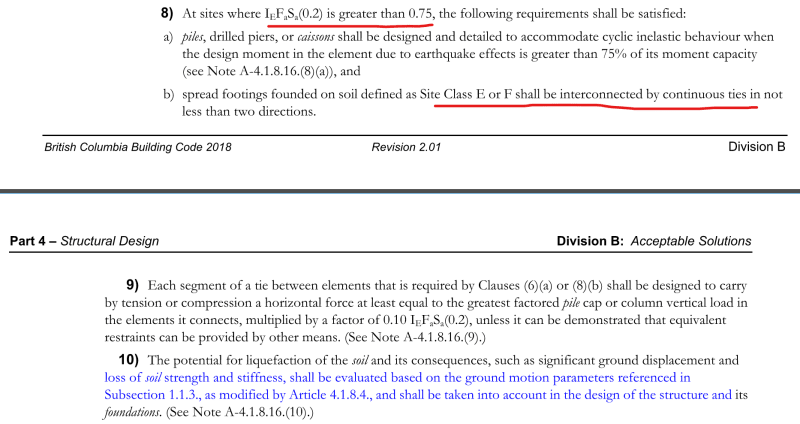Brad805
Structural
- Oct 26, 2010
- 1,518
I am finishing a single story precast project at a site where the geotech has indicated the spread footings must be tied in two directions per the clause below. I do not agree with that assertion based on the site parameters, but I have given up debating with the Geotech. In the past we have detailed a footing between each pad footing, but in this case I am being asked to encase the ties in the floor slab (slab on grade) like they did at the first bldg built on the site (diff eng). The bays are not large in this building, so the tie force is only 15kip. The problem I have with this is the fact the continuous ties will restrain the slab shrinkage during curing. My question is would you be concerned with this to the point you would not permit this solution, or what measures would help to minimize cracking during the cure?
The geotech has also completed a lengthy study into the potential for liquefaction at the site. They have recommended quite a large differential settlement across the width of the bldg. I was asked to design the foundation similar to the first building where typical spread footings are used. I am sure the building will stand up for the occupants to escape during the worst case seismic event in the report, but I expect the bldg will be a write off. This foundation type is very common for this budling size and location, but I believe one could reduce the overall risk with a different foundation type if they wanted to spend the $$. My question is, do most send a letter to the owner discussing this or do you consider the fact the owner has the geotech report sufficient?


The geotech has also completed a lengthy study into the potential for liquefaction at the site. They have recommended quite a large differential settlement across the width of the bldg. I was asked to design the foundation similar to the first building where typical spread footings are used. I am sure the building will stand up for the occupants to escape during the worst case seismic event in the report, but I expect the bldg will be a write off. This foundation type is very common for this budling size and location, but I believe one could reduce the overall risk with a different foundation type if they wanted to spend the $$. My question is, do most send a letter to the owner discussing this or do you consider the fact the owner has the geotech report sufficient?


